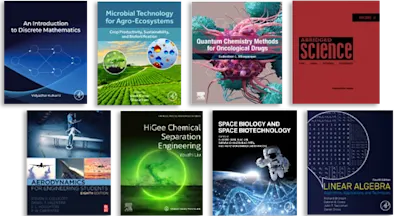
Neural Engineering Techniques for Autism Spectrum Disorder, Volume 2
Diagnosis and Clinical Analysis
- 1st Edition - October 25, 2022
- Latest edition
- Editors: Jasjit S. Suri, Ayman S. El-Baz
- Language: English
Neural Engineering for Autism Spectrum Disorder, Volume Two: Diagnosis and Clinical Analysis presents the latest advances in neural engineering and biomedical engineering as applie… Read more

Neural Engineering for Autism Spectrum Disorder, Volume Two: Diagnosis and Clinical Analysis presents the latest advances in neural engineering and biomedical engineering as applied to the clinical diagnosis and treatment of Autism Spectrum Disorder (ASD). Advances in the role of neuroimaging, magnetic resonance spectroscopy, MRI, fMRI, DTI, video analysis of sensory-motor and social behaviors, and suitable data analytics useful for clinical diagnosis and research applications for Autism Spectrum Disorder are covered, including relevant case studies. The application of brain signal evaluation, EEG analytics, fuzzy model and temporal fractal analysis of rest state BOLD signals and brain signals are also presented.
A clinical guide for general practitioners is provided along with a variety of assessment techniques such as magnetic resonance spectroscopy. The book is presented in two volumes, including Volume One: Imaging and Signal Analysis Techniques comprised of two Parts: Autism and Medical Imaging, and Autism and Signal Analysis. Volume Two: Diagnosis and Treatment includes Autism and Clinical Analysis: Diagnosis, and Autism and Clinical Analysis: Treatment.
- Presents applications of Neural Engineering techniques for diagnosis of Autism Spectrum Disorder (ASD)
- Includes in-depth technical coverage of assessment techniques, such as the functional and structural networks underlying visuospatial vs. linguistic reasoning in autism
- Covers treatment techniques for Autism Spectrum Disorder (ASD), including social skills intervention, behavioral treatment, evidence-based treatments, and technical tools such as Magnetic Resonance Spectroscopy for ASD
- Written by engineers for engineers, computer scientists, researchers and clinicians who need to understand the technology and applications of Neural Engineering for the detection and diagnosis of Autism Spectrum Disorder (ASD)
Biomedical Engineers and researchers in neural engineering, medical imaging, and neural networks. Students, researchers and clinicians in autism, and a variety of other specialties
1. Remote Telehealth Assessments for Autism Spectrum Disorder
2. Maternal Immune Dysregulation and Autism Spectrum Disorder
3. Reading differences in eye-tracking data as a marker of high-functioning autism in adults and comparison to results from web-related tasks
4. Parents of Children with Autism Spectrum Disorders: Intervention with and for Them
5. Applications of Machine Learning to Assist the Diagnosis of Autism Spectrum Disorder
6. Potential Approaches and recent advances in biomarker discovery in autism spectrum disorder
7. Detection and Identification of warning signs of autism spectrum disorder: instruments and strategies for its application
8. Machine Learning in Autism Spectrum Disorder Diagnosis and treatment: techniques and applications
9. Inhibition of LSD1 Enzyme activity by TAK-418 as a novel therapy for autism
10. Behavioral Phenotype features of Autism Spectrum Disorder
11. Development of an animated infographic about autism spectrum disorder
12. Fundamentals of Machine Learning modelling in Behavioral screening and diagnosis of autism spectrum disorder
13. A comprehensive study on Atlas-based classification of autism spectrum disorder using functional connectivity features from resting state fMRI
14. Event-related potentials and gamma oscillations in EEG as functional diagnostic biomarkers and outcomes in autism spectrum disorder treatment research
- Edition: 1
- Latest edition
- Published: October 25, 2022
- Language: English
JS
Jasjit S. Suri
Dr. Jasjit Suri, PhD, MBA, is a renowned innovator and scientist. He received the Director General’s Gold Medal in 1980 and is a Fellow of several prestigious organizations, including the American Institute of Medical and Biological Engineering and the Institute of Electrical and Electronics Engineers. Dr. Suri has been honored with lifetime achievement awards from Marcus, NJ, USA, and Graphics Era University, India. He has published nearly 300 peer-reviewed AI articles, 100 books, and holds 100 innovations/trademarks, achieving an H-index of nearly 100 with about 43,000 citations. Dr. Suri has served as chairman of AtheroPoint, IEEE Denver section, and as an advisory board member to various healthcare industries and universities globally.
AS